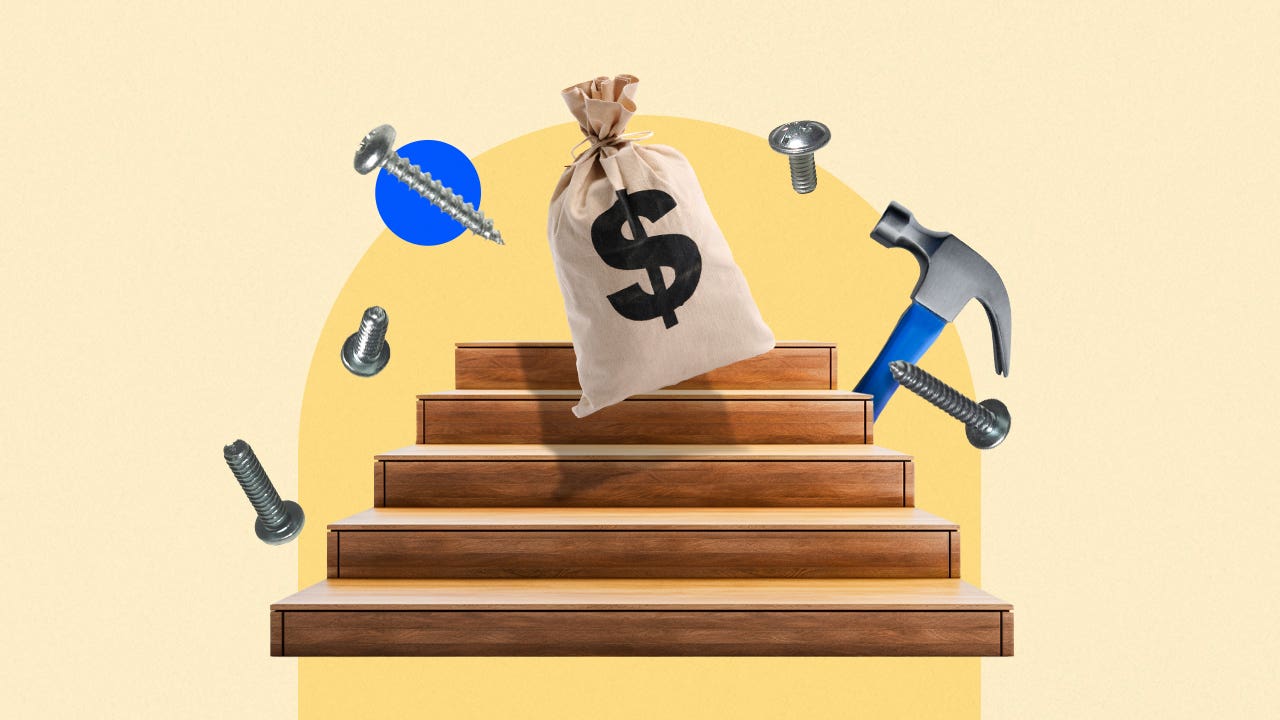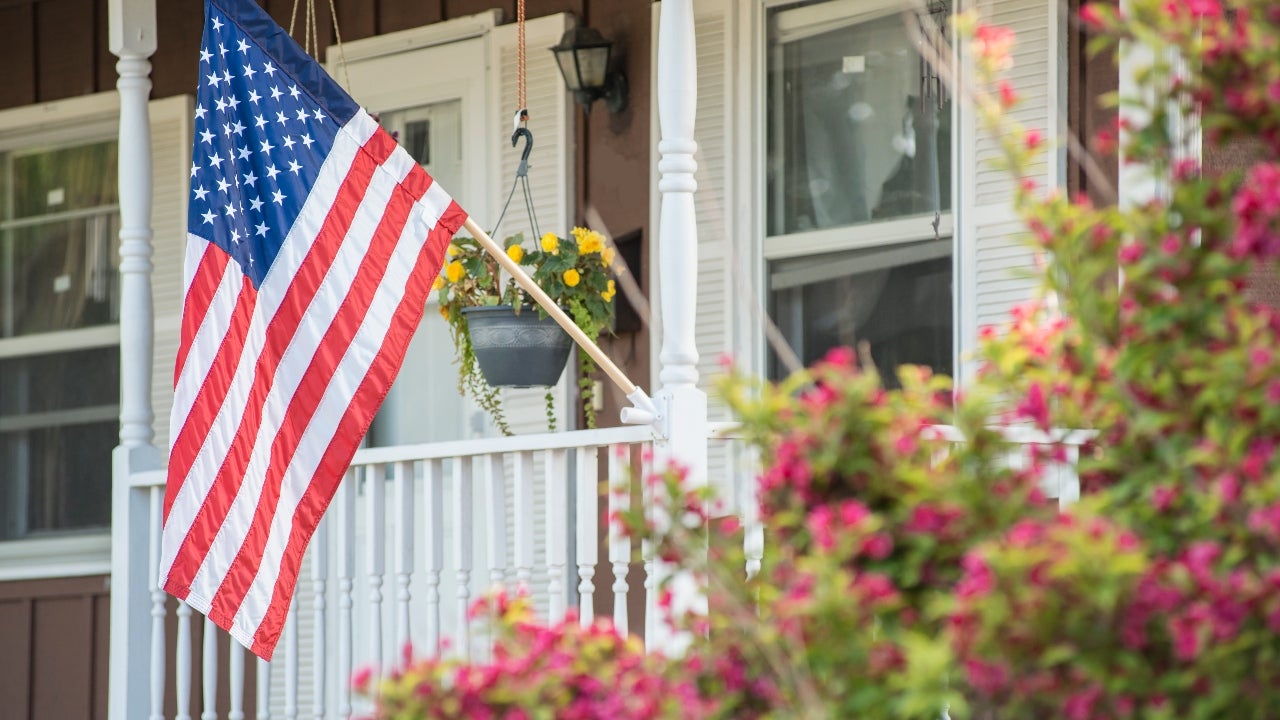VA construction loan: How to build your home via a VA loan




Key takeaways
- A VA construction loan could be a viable option if you’re an active-duty service member or veteran looking to build a single-family home.
- VA construction loans generally don’t require a down payment or mortgage insurance, and the credit guidelines are a bit more relaxed than those of traditional construction loans.
- Borrowers must work with a VA-approved lender and builder, and the project is subject to department inspections.
- Alternatives to VA construction loans include traditional construction loans or government-backed loans, but they may have stricter requirements.
If you’re an active or veteran member of the military and want to construct a new home, you might be eligible for no-down-payment financing backed by the U.S. Department of Veterans Affairs. Here’s what you need to know about building a home with a VA construction loan.
What is a VA construction loan?
A VA construction loan is a short-term loan to cover the cost of building a home, similar to other kinds of construction loans. In contrast to regular mortgages, you don’t receive a lump sum with this sort of financing. Instead, you receive it through a series of fund “draws” as different stages of the construction process are completed. The money can be used to finance the land or lot purchase as well as the actual building of the home, plus the loan funding fee. However, you can’t finance any other closing costs, such as the appraisal fee.
VA loans generally don’t require down payments, and that applies to these construction loans as well. However, in certain circumstances, you may have to put up some cash (see “How to get a VA construction loan” below).
Types of VA construction loans
There are two common VA construction loan options to choose from:
- Construction-to-permanent or one-time/single close loan: You take out a construction loan to cover the cost of the project; the loan then converts to a “regular” mortgage, and you start making repayments. With this kind of arrangement, you’ll only have to do the paperwork and pay for closing costs once.
- Construction-only or two-time close loan: Your initial loan pays for the construction, and comes due once the project is complete. You then take out a regular mortgage, which you use to repay the first loan. This means you’ll go through two loan closings, and need to qualify for the second loan as you did for the first. But you might get a better deal on this mortgage, especially if interest rates have dropped in the time between construction and completion.
VA construction loan requirements
To qualify for a VA construction loan, there are several requirements you must meet, including working with a VA-approved lender. The other eligibility criteria include:
- Certificate of eligibility (COE)— This comes from the VA. You can file for this certificate online or submit VA Form 26-1880 to your local VA office.
- Credit score – There’s no minimum set by the VA, but most lenders require a credit score of at least 620.
- Debt-to-income (DTI) ratio – You’ll need to have a DTI of 41 percent or less to get most VA loans, although there are circumstances where that requirement is waived (if you have tax-free income, for example).
- Affordability. Using a formula based on your home’s location, the size of your household and other factors, you’ll need to show that you can handle your loan payments with your residual income.
- Funding fee – VA loans don’t charge mortgage insurance for minimal down payments, but they do carry one-time funding fees. These range from 1.25 percent to 3.3 percent, based on the size of your down payment and how many times you’ve used a VA loan.
- Builder approval – In addition to using a VA-approved lender, you’ll also need to use a VA-approved builder. Your builder needs to either already be registered with the VA or get their approval by registering with the department.
- Construction plans – You’ll need to submit your construction plans to the lender, including blueprints and the materials needed for the project, and get an appraisal to determine the value of the home you plan to build. Additionally, you’ll need a VA property certification before you can move forward.
- Warranty – You’ll need at least a one-year warranty from the builder or an insured 10-year protection plan.
If these conditions are met and you’re approved for a construction loan, know that a VA inspector will be paying attention to the project every step of the way. As each major phase of the build comes to an end, the inspector will review the work and then approve further draws to cover costs.
How to get a VA construction loan
Not many mortgage lenders offer VA construction loans, so it might be challenging to find one to fund your project. When you do find one, your loan officer can help you obtain your COE and determine how much loan you qualify for.
Generally, the process works like this:
Get your Certificate of Eligibility
When you want to start construction, you’ll need to file a Certificate of Eligibility (COE) to secure your construction loan. This certificate proves that you’ve met the minimum service requirements to be eligible for a VA loan.
Visit the VA eBenefits portal and apply for your COE online, via your lender, or by mail. You will need some backup information to apply. Veterans must have their DD214 discharge papers on hand, and active-duty service members must have a statement of service signed by their personnel officer.
Work with a VA-registered builder
To qualify for your loan, you can only work with contractors approved by the VA. Your builder can help you organize the construction plans and other documentation for your lender. Lenders often have a list of registered builders with VA Builder ID Numbers. If you want to use a builder who is not registered, the lender may require them to be registered through the VA and follow the terms of the loan.
You can search for VA-registered builders through the Veterans Information Portal or ask your non-registered builder to submit the correct paperwork (VA Form 26-421 and VA Form 8791) to your local VA Regional Loan Center to get a VA Builder ID number.
Find a VA-approved lender
Shop around: You do want a specialist in construction loans and VA loans. There are several major VA lenders that work with borrowers nationwide, but your local bank or credit union might also offer what you need. VA construction loans can be more difficult than regular VA loans to obtain, but an experienced loan officer should be able to guide you through the process, including determining whether you need a one- or two-time close loan.
Get preapproved
To get preapproved for the loan, you’ll need to meet all of the VA’s and the lender’s requirements around credit and finances. Make sure you are ready for the preapproval process by having all your documents gathered:
- paperwork that verifies your income and identity
- your COE
- deed to the land, survey and settlement statement (if you already own the land)
- purchase agreement for the land (if you haven’t purchased it yet)
- construction contract with the builder
Do an appraisal
Your lender will order an appraisal of the soon-to-be-built property (that is, they’ll evaluate the lot and the home design). If the appraisal comes in lower than the project’s cost, you’ll need to make up the difference. In addition, when using a VA loan, you will need an additional VA home home appraisal.
The appraisal will be based on your builder’s plans which should adhere to the area standards where you are building your home. The home must meet zero-down payment loan guidelines, so make sure your home’s design and other details, like square footage, are in line with area standards.
Approve the construction draws
When you close on the loan, the funds for the project are disbursed in installments based on the builder’s timeline terms. The loan money remains in an escrow account, and as construction progresses, it’s subject to periodic inspections — generally after a milestone in construction (when the foundation is laid, the house is framed, etc.). After passing each inspection, your lender will have you approve a release of funds, which go directly to the builder for the next stage of the project. This is why a builder must be knowledgeable about how VA construction loans work, because you can only draw down funds in installments based on each phase passing inspection.
Pass the VA inspection
Once the project is complete, you’ll need to have an inspection to ensure it meets VA standards. A final inspection will confirm that the home was built according to the approved plans. When the project is approved, you can modify the loan into a permanent VA mortgage.
VA construction loan pros and cons

Pros of VA construction loans
- Might not need a down payment
- Potential to have the funding fee waived for certain veterans, such as those with service-connected disabilities
- No mortgage insurance
- Can roll closing costs into the loan
- More relaxed credit and income criteria

Cons of VA construction loans
- Less choice among builders and lenders, who must be VA-approved
- Appraisals and inspections can take longer
- Interest rates and closing costs can be higher than conventional loans
- Funding fee charge
- Potential restrictions on lot size and type of home
Alternatives to a VA construction loan
If you’re having difficulty finding a VA construction loan lender, or if you don’t qualify for a VA construction loan, you have at least two other financing options:
- Traditional construction loan – One option is to get a traditional construction loan during the build and then a VA loan to finance the home.
- Government-backed construction loan – Another option is to get another government-backed construction loan, such as an FHA construction loan or a USDA construction loan, if you’re in a rural area.
Keep in mind, however, that these might have different requirements or more rigid underwriting compared to a VA construction loan.
VA construction loan FAQ
-
VA construction loans must be used to build a single-family home. These loans aren’t designed for multifamily housing or other projects. While you can customize the home, avoid adding anything too out-of-the-ordinary to the design: It’s important to make sure what you build is similar in size and style to other homes in the area. The same is true of the lot size.
-
In general, a regular construction loan has more rigorous underwriting requirements, such as stricter credit score and DTI criteria. Additionally, you’ll likely need to make a substantial down payment to get a regular construction loan. With a VA construction loan, you don’t usually need to make a down payment, and you have a little more flexibility with credit requirements. For some veterans, it can be easier to get a VA construction loan than to qualify for a regular construction loan. However, the lot size and type of home you’re allowed to build are usually limited, and the project might take longer to finish, depending on the frequency of inspections.
-
Not all VA loan lenders are also VA construction loan lenders. A lender might offer a VA loan for a home purchase but not a VA loan to build a residence. To find a VA construction loan lender, start by visiting the VA website to get a list of VA-approved lenders.It can be beneficial to work with a lender who has experience with VA construction loans because there are a number of qualifications and steps in the process.
-
Construction loan rates, in general, are higher than the rates for a mortgage used to buy an existing home. That’s because a mortgage is a secured loan — meaning the home is the collateral — and if you default on your payments, the mortgage lender can recoup its losses by selling that collateral. Lenders don’t have this option with a construction loan, since the home isn’t built yet, so the lender is assuming more risk and setting rates accordingly. Note that individual lenders set their own interest rates for VA construction loans; the VA doesn’t determine rates.
-
Finding a VA construction loan lender may take some work because you need to use a VA-approved lender who will also handle a construction loan, which is different from a standard VA loan. Any bank, credit union, or other type of lender that offers VA loans may be able to help you with a VA construction loan, if it doesn’t offer them itself. You can also reach out to the U.S. Department of Veteran Affairs office for they have a list of local lenders who handle VA construction loans.
-
You will start making mortgage payments after the builders finish building the home. Most VA construction loans are rolled over into VA loans.
You may also like

Documents you need to apply for fast business loans

What are commercial real estate or CRE loans?

Can active military get a VA loan?

Guide to FHA adjustable-rate mortgages

